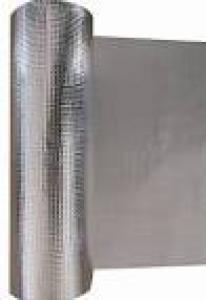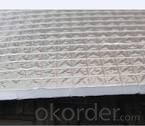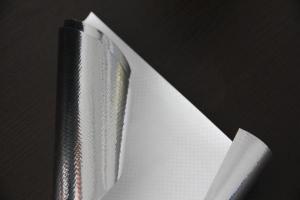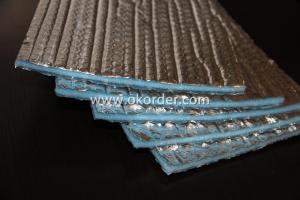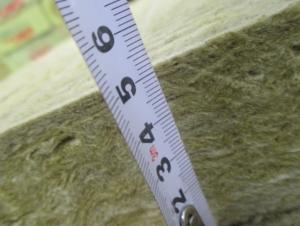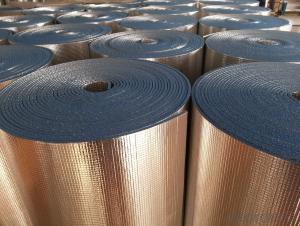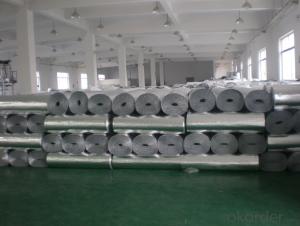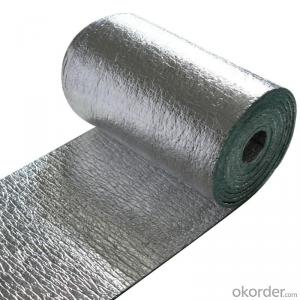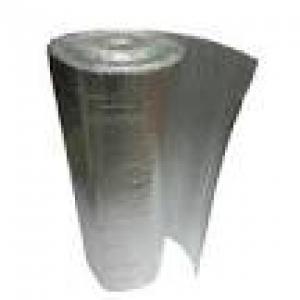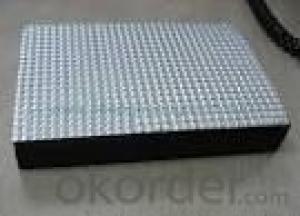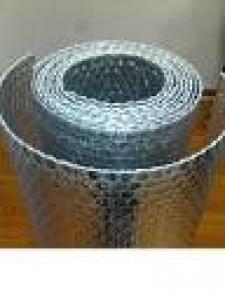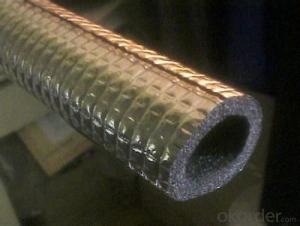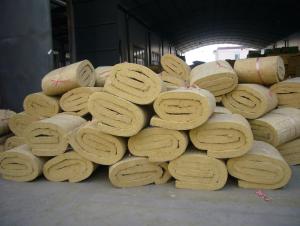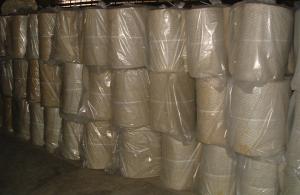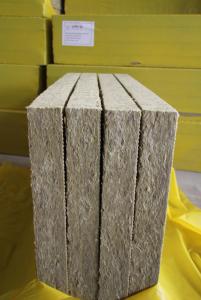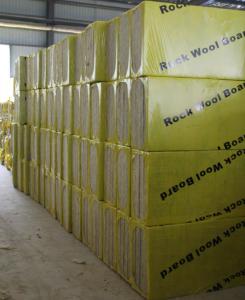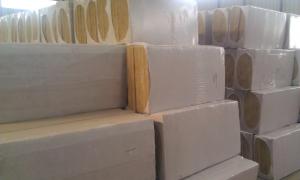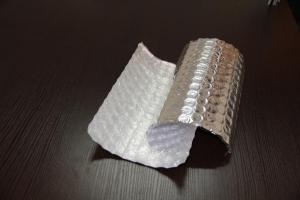Metal Roofing Insulation Underlayment - Aluminum Foil Coated Bubble Type 17
- Loading Port:
- Shanghai
- Payment Terms:
- TT OR LC
- Min Order Qty:
- 10000 m²
- Supply Capability:
- 100000 m²/month
OKorder Service Pledge
OKorder Financial Service
You Might Also Like
Bubble Insulation Benefits:
Reflects 96% of radiant heat
Non-toxic / Non-carcinogenic
Does not require protective clothing or respirators to install
Durable and lightweight
Does not compress, collapse or disintegrate
Vapor and radon retarder
Easy to cut and install
Permanent and maintenance-free
Does not provide a growth medium or nutritive value for fungus, insects, or rodents
Does not support the growth of mold or mildew
Not affected by moisture or humidity
Lowers heating and cooling costs year round
Bubble Foil Application:
Metal & Steel Buildings
Homes
Roof Underlayments
Cathedral Ceilings
Crawl Spaces
Hot Water Heaters
Basement Walls
Floors
Garage Doors
Concrete slabs
Driveway snow melts
Pole barns
Post frame buildings
Poultry barns
Animal kennels
Temperature sensitive storage areas
Air Bubble Foil Insulation Tech Data:
Material Structure: AL/Bubble/AL | ||
Bubble Size:D10mm*H 4mm(10*2.5/10*4/10*6/20*7/25*10)choose the bubble size | ||
Bubble Weight:0.13kg/m2 ( can be customized ) | ||
Roll Width:1.2m (lenth can be customized) | ||
PROPERTIES | TEST DATA | UNIT |
Thickness | 3.5-4 | mm |
Weight | 250 | g/m2 |
Emissivity | 0.03-0.04 | COEF |
Thermal conductivity | 0.034 | w/m0 |
Apparent Density | 85 | kg/m3 |
Reflectivity | 95-96 | % |
Water Vapour Transmission | 0.013 | g/m2kpa |
Corrosion | doesn't generate | |
Tensile Strength(MD) | 16.98 | Mpa |
Tensile Strength(TD) | 16.5 | Mpa |
- Q: As opposed to other roof structures, such as Mansard or Hipped roofs. If so, is it because there is a lesser distance between the internal heat source and the roof?
- For insulation, what is important is the material it is done and how it is positioned (different materials used on the same roof), and not it if flat or anything else.
- Q: hi me and my friends made a lounge out of my old tin roof shed we have a tv speakers and a few other electrical goods... since winters on its way we were wondering whats the best and cheapest way to insulate the place note that its a tin rof but has wood under it where the old indulation used to be the place is pretty chilly and sometime damp plz help we dont wanna be freezing our asses off in there thanks :)
- florida fan nailed it. You can't JUST insulate and solve the problem. Insulating only keeps IN a desired temperature once it is introduced. Once the source of temperature change on the inside is gone, the space will gradually take on the temperature of the surrounding environment. You will absolutely need a heat source in order for the insulation to do its job.
- Q: I'm thinking of converting my brick walled corrugated iron shed into a changing room for winter hot tub use. I was advised by a friend that the first thing i should do is insulate the roof using glass fibre insulation (the yellow fluffy stuff in the loft) and a simple Plywood ceiling but im not sure how i would stick it to the existing roof (dimensions 170cm x 147cm). So..... how should i insulate the roof of my future changing room????
- If the roof has joists, which I imagine it would, you would put the bats of insulation into those spaces... these can then be stapled into place or if that isn't possible, you can run a wire between the joists to hold the bats in place. If using faced insulation be sure to put the paper side towards the warm area (inside) to prevent condensation.
- Q: i am going to insulate my conservatory roof its poly carbon and dirt has got inside so cant clean what can i use its a semi flat roof i thought about using insulation board silver backed your comments will be gratefull
- How To Insulate Conservatory Roof
- Q: Does snow on the roof help or hurt my heating bill?
- I would think that the snow on your roof actually helps to insulate your house more. Think about dog sled teams in the far north the dogs dig themselves under the snow to stay warm at night. Also I have taken winter survival trips while I was in Canada and was taught that snow acts as an insulator. I think it helps.
- Q: I am specifically considering the re-roofing of a an older home where rafters were made with 2x4 or 2x6 and the rafter space (and possibly the attic space) does not allow sufficient space for insulation and proper ventilation behind the insulation. The old layers of roofing have to be removed in any event. At this point I am considering applying insulation boards on the existing sheathing and then a new layer of sheathing before the new roofing material. (similar to a SIP: structural insulated panel) The two issues I am concerned with is that the insulation can act as a vapor barrier. Would condensation potentially rot the lower sheathing. How is this avoided in SIP roofing panels? The second issue may be with fire regulations.
- The sip panels are vented depending on what thickness over all that you want. The last ones I used had 4 inches of rigid foam board then on top of that had 3" strips every 16" an inch thick which created an airspace. On top was 5/8 Osb. To create an affective air flow the fascia cannot plane through with the plywood at the bottom but fall just short of the 1" space. To cap it a oversized vented drip edge is used. You must also have a ridge vent for proper flow. These panels can near 100$. You can do it your own way like I do when building log cabins by laying 2" foam down first then lay 2x4 16 on center on top then finally your plywood. If you use CDX instead of Osb it will outlast it by 100%. Rigid foam insulation is not like batt-faced. Rfboard ins. Is used in boat hulls and even after being submerged for long periods of time will return to its original density and r-value. For obvious reasons batt ins. Will not. You won't have a moisture problem as long as you don't have a venting problem. If you are using high hat lighting don't let the cans touch your rigid ins. Tuck batt in softly around them TAKE THE PAPER OFF! By code if you have an interior wall 10or more ft. It must have a fireblock, simply a 2x4 turned flat between the studs. On your roof the ceiling you see inside, (most likely 7/8 tongue and groove boards) passes as the same. Good luck!
- Q: Can you put fiberglass insulation on the under side of roof tiles in the loft in the house?
- You should not be able to see your roof tiles from inside your house. So no, it can not be done. You can attach insulation to the rafters if that is what you meant.
- Q: Are black concrete roof tiles for my house uncomfortably hot even with roof under sheeting and insulation?
- it somewhat is a query of effortless warmth absorption the darker the colour, the greater mild is absorbed. an identical applies for warmth. The darker the colour, the greater warmth would be absorbed. think of of once you dress your self to circulate out on a warm and sunny day, you're unlikely to positioned on black top? The darker shade will help interior the iciness if there is little snow on the roof. on the grounds that warmth would be absorbed, your furnace will artwork much less saving you basically somewhat electrical energy, oil or gas based what you return to a determination to put in the living house. desire that helps =)
- Q: i live in a tropical country and i need to insulate my roof to block off the heat from the sun...which insulation would best help me? aluminum foil with foam, real foil with foam or PE with foam? pls help...thank u so much!
- look into a product called "Snow Roof". You roll it on like paint and it will lower inside temp 10-20 degrees.
- Q: Tax Question: Itemized receipt for roofing and insulation?
- I choose the best answer based on the fact that he was correct. Our installation of the roof tiles was not a tax deductible item, but the extra insulation they installed was tax deductible, giving us an over extra $350 in return. We were just going to forget it, but it was actually worth it!
Send your message to us
Metal Roofing Insulation Underlayment - Aluminum Foil Coated Bubble Type 17
- Loading Port:
- Shanghai
- Payment Terms:
- TT OR LC
- Min Order Qty:
- 10000 m²
- Supply Capability:
- 100000 m²/month
OKorder Service Pledge
OKorder Financial Service
Similar products
Hot products
Hot Searches
Related keywords
